Vikings Had Dark Humor And Joked Even During Deadly Battles
Ellen Lloyd - AncientPages.com - Historical studies of Icelandic Sagas reveal Vikings had dark humor and joked even during deadly battles.
It was a mixture of sarcasm, irony, and unusual jokes. The Vikings' approach was that if you knew you were going to die, why not do it laughing?
Credit: Adobe Stock - van Koop
Death was never something Vikings feared because they believed that a warrior who died in battle was rewarded and could join all other great fighters in Valhalla, a majestic, enormous hall located in Asgard, ruled over by the great god Odin.
Written during the Middle Ages, Icelandic Sagas tell stories of Vikings, and usually, the tales all centered around various kinds of disputes that ended in battles between the Vikings. Often, two or more families could be involved in blood feuds that lasted decades or generations.
According to historian Trine Buhl at the Århus University in Denmark, authors of the Icelandic Sagas deliberately added dark humor to their tales. Without it, the stories would be boring.
Icelandic Sagas are full of Viking jokes, dark humor and sarcasm.Credit: Public Domain
There are several examples of sarcasm and dark humor in the Sagas. For instance, the Droplaugarsona Saga, written sometime in the 13th century, tells about Droplaug's two sons, Grímr and Helgi.
When the Viking Helgi gets his lower lip cut off in a battle, he says to his opponent:
"I have never been particularly handsome and you haven't exactly improved my attractiveness."
This remark shows Viking Helgi possessed self-knowledge and self-deprecating humor.
A Viking warrior never feared death. Credit: Adobe Stock - Salsabila Ariadina
In the Gunnlaug Ormstungas Saga, a famous Icelandic saga that is over 1,000 years old, we encounter Viking Gunnlaug, who falls in love with a young woman named Helga.
Gunnlaug embarks on a long and adventurous journey, and when he returns home, he discovers that his beloved Helga was forced to marry Hrafn, Gunnlaug's enemy.
This leads to a long, hard battle between the two men. After a while, Gunnlaug uses his sword to cut off Hrafn's foot.
Gunnlaug is happy and feels this is the end of the battle which he won. However, despite being mutilated, his enemy Hrafn yelled:
" It's true things are not going my way, but I can probably continue a while longer if I just get something to drink!"
The battle ended with the death of both Vikings.
Sarcasm, irony, and dark humor were not restricted to Icelandic Sagas. In the Kings' Sagas, we encounter similar jokes often uttered when someone's life is about to end.
In one chapter, we can read about how the Danish King Harald Bluetooth refuses to accept
Sweyn Forkbeard (Sven Tveskägg) as his son. Sweyn Forkbeard is instead raised by Palnatoke, a legendary Danish hero, chieftain of the Island of Fyn, and founder of the Jomsvikings Brotherhood.
Sweyn Forkbeard (Sven Tveskägg) is furious when he learns King Bluetooth calls him a bastard. He seeks revenge, gathers his followers, and convinces them to wage war on King Harald Bluetooth.
Icelandic Sagas are full of tales about Norse monsters, heroes, battles and adventures.
One late evening, Forkbeard's assassins see the King sitting, calmly relaxing by the fire. When the King bends forward, one of the killers shoots with an arrow.
In the Norwegian King's Sagas, the author writes," According to testimonies of those who knew and witnessed this event, the arrow flew straight into the King's lowest point, continued through his body, and came out his mouth. Then the King collapsed and died."
Historian Trine Buhl said the most popular sagas were those with dark humor. Most researchers agree that the Sagas are based on oral traditions.
From about 900 A.D. to 1000 A.D., the sagas were told by storytellers from one generation to another.
Around the year 1200 A.D., literate men such as monks and other learned men started to write down the Sagas.
Over the years, when the Sagas spread among the Nordic countries, the stories became more colorful and often slightly exaggerated.
Some of the stories can have been confirmed because the same verses have been found on runestones from the Viking Age.
Written by Ellen Lloyd – AncientPages.com
Updated on November 27, 2023
Copyright © AncientPages.com All rights reserved. This material may not be published, broadcast, rewritten or redistributed in whole or part without the express written permission of AncientPages.com
More From Ancient Pages
-
 Long-Lost Anglo-Saxon Monastery Ruled By Queen Cynethryth Of Mercia Discovered By Archaeologists
Archaeology | Aug 19, 2021
Long-Lost Anglo-Saxon Monastery Ruled By Queen Cynethryth Of Mercia Discovered By Archaeologists
Archaeology | Aug 19, 2021 -
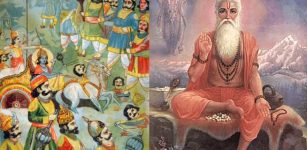 Legend Of Kauravas – Ancient Cloning And Test Tube Babies In India?
Featured Stories | Apr 21, 2017
Legend Of Kauravas – Ancient Cloning And Test Tube Babies In India?
Featured Stories | Apr 21, 2017 -
 Mystery Of The Second Gabriel Stone And The Man Resurrected By Archangel Gabriel
Biblical Mysteries | Sep 10, 2018
Mystery Of The Second Gabriel Stone And The Man Resurrected By Archangel Gabriel
Biblical Mysteries | Sep 10, 2018 -
 Why Is The Hungry Ghost Festival Celebrated In August?
Ancient Traditions And Customs | Aug 12, 2019
Why Is The Hungry Ghost Festival Celebrated In August?
Ancient Traditions And Customs | Aug 12, 2019 -
 On This Day In History: Macbeth, King of Scots Killed At The Battle Of Lumphanan – On August 15, 1057
News | Aug 15, 2016
On This Day In History: Macbeth, King of Scots Killed At The Battle Of Lumphanan – On August 15, 1057
News | Aug 15, 2016 -
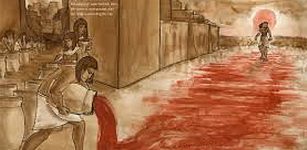 Lady Of Drunkenness And How God Ra Wanted To Teach Humans A Lesson
Egyptian Mythology | Jun 20, 2019
Lady Of Drunkenness And How God Ra Wanted To Teach Humans A Lesson
Egyptian Mythology | Jun 20, 2019 -
 On this day in history: Li Shimin becomes Emperor Taizong of Tang, China – Sep 4, 626
News | Sep 4, 2015
On this day in history: Li Shimin becomes Emperor Taizong of Tang, China – Sep 4, 626
News | Sep 4, 2015 -
 Identity Of Anti-Christ And Number 666 Revealed By Ancient History Professor
Archaeology | Apr 6, 2019
Identity Of Anti-Christ And Number 666 Revealed By Ancient History Professor
Archaeology | Apr 6, 2019 -
 Schist Disk – Mysterious Piece Of Sophisticated Technology Could Rewrite History – Scientists Are Not Sure What They Are Dealing With
Artifacts | Jun 30, 2013
Schist Disk – Mysterious Piece Of Sophisticated Technology Could Rewrite History – Scientists Are Not Sure What They Are Dealing With
Artifacts | Jun 30, 2013 -
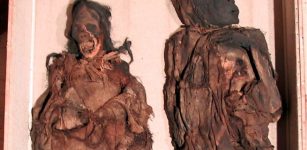 Scientific ‘Detective Work’ With South American Mummies Reveals They Were Brutally Murdered
Archaeology | Sep 9, 2022
Scientific ‘Detective Work’ With South American Mummies Reveals They Were Brutally Murdered
Archaeology | Sep 9, 2022 -
 Denisovans Or Homo Sapiens: Who Were The First To Settle Permanently On The Tibetan Plateau?
Archaeology | Dec 9, 2021
Denisovans Or Homo Sapiens: Who Were The First To Settle Permanently On The Tibetan Plateau?
Archaeology | Dec 9, 2021 -
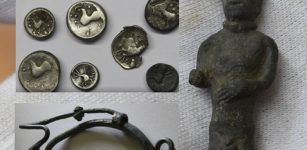 Bronze Celtic Figurine Of Man With Golden Eyes Found In Slovakia
Archaeology | Dec 12, 2020
Bronze Celtic Figurine Of Man With Golden Eyes Found In Slovakia
Archaeology | Dec 12, 2020 -
 Long-Standing Mystery Of What May Have Triggered Ice Age Solved – New Study
Archaeology | Jun 24, 2022
Long-Standing Mystery Of What May Have Triggered Ice Age Solved – New Study
Archaeology | Jun 24, 2022 -
 Anglo-Saxon Watermill Discovered In Buckinghamshire, UK
Archaeology | Mar 13, 2023
Anglo-Saxon Watermill Discovered In Buckinghamshire, UK
Archaeology | Mar 13, 2023 -
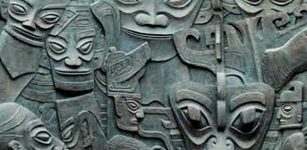 Baffling Sanxingdui Civilization: Why Did These People Have Fascination For Eyes?
Civilizations | Mar 21, 2017
Baffling Sanxingdui Civilization: Why Did These People Have Fascination For Eyes?
Civilizations | Mar 21, 2017 -
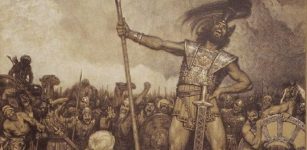 Skull Of Biblical Giant Goliath Is Buried On The Hill Golgotha In Jerusalem – New Claim
Archaeology | Nov 7, 2019
Skull Of Biblical Giant Goliath Is Buried On The Hill Golgotha In Jerusalem – New Claim
Archaeology | Nov 7, 2019 -
 6,000-Year-Old Submerged Settlement Shows Black Sea Level Was Lower 5,000 Years Ago – ‘Black Sea Deluge’ Theory?
News | Nov 30, 2020
6,000-Year-Old Submerged Settlement Shows Black Sea Level Was Lower 5,000 Years Ago – ‘Black Sea Deluge’ Theory?
News | Nov 30, 2020 -
 Ancient DNA Unravels The Mystery Of Huge 6,500-Year-Old Cemetery And The Tomb Of A ‘Masculine Woman’ In Normandy, France
Archaeology | May 5, 2022
Ancient DNA Unravels The Mystery Of Huge 6,500-Year-Old Cemetery And The Tomb Of A ‘Masculine Woman’ In Normandy, France
Archaeology | May 5, 2022 -
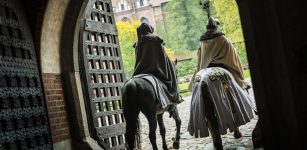 Teutonic Knights – Facts And History About The Christian Military Order
Featured Stories | Feb 21, 2019
Teutonic Knights – Facts And History About The Christian Military Order
Featured Stories | Feb 21, 2019 -
 Gungnir: Odin’s Magical Weapon That Provoked Or Reduced Conflicts In Norse Mythology
Featured Stories | May 12, 2020
Gungnir: Odin’s Magical Weapon That Provoked Or Reduced Conflicts In Norse Mythology
Featured Stories | May 12, 2020




